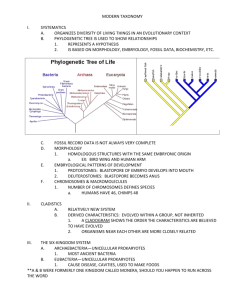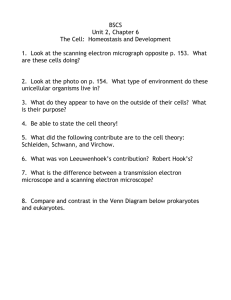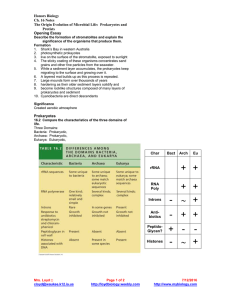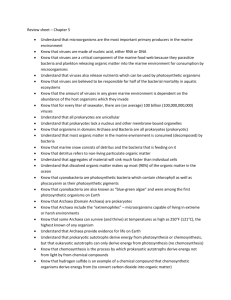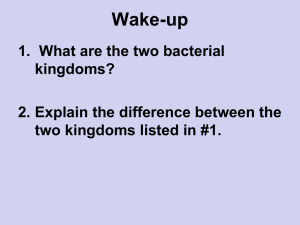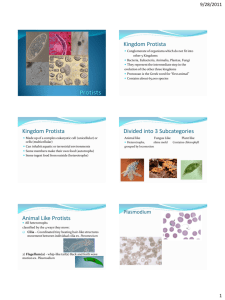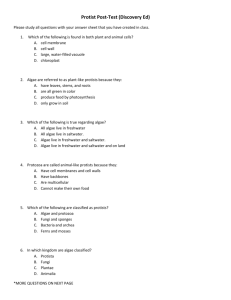The microbial world - Jocha
advertisement
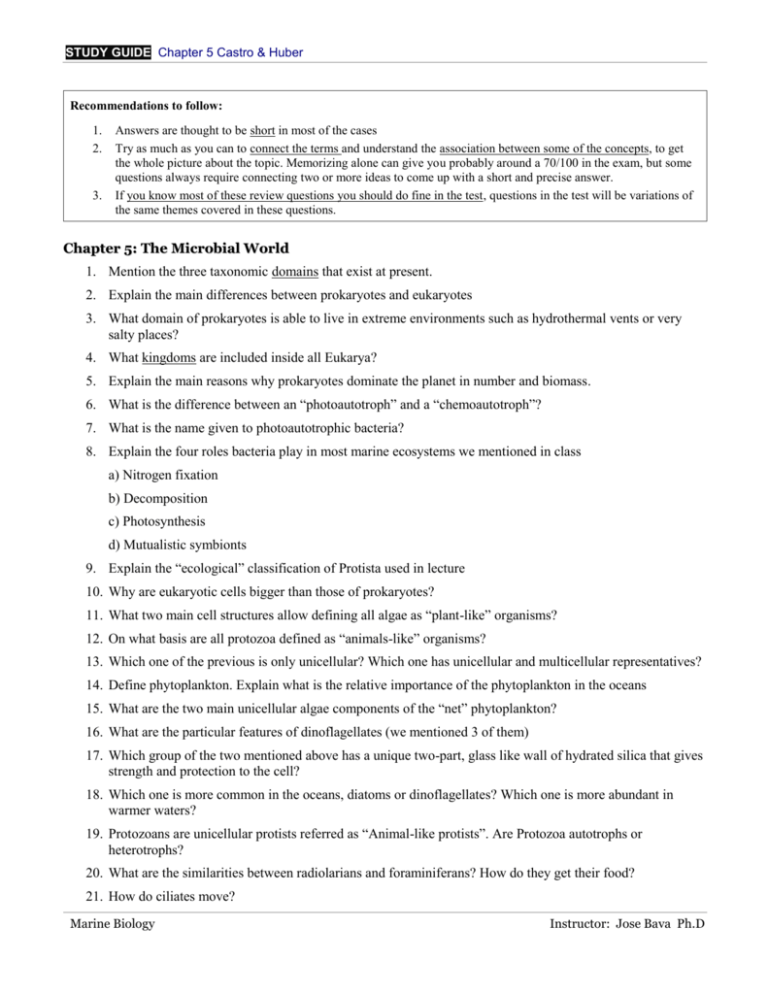
STUDY GUIDE Chapter 5 Castro & Huber Recommendations to follow: 1. 2. 3. Answers are thought to be short in most of the cases Try as much as you can to connect the terms and understand the association between some of the concepts, to get the whole picture about the topic. Memorizing alone can give you probably around a 70/100 in the exam, but some questions always require connecting two or more ideas to come up with a short and precise answer. If you know most of these review questions you should do fine in the test, questions in the test will be variations of the same themes covered in these questions. Chapter 5: The Microbial World 1. Mention the three taxonomic domains that exist at present. 2. Explain the main differences between prokaryotes and eukaryotes 3. What domain of prokaryotes is able to live in extreme environments such as hydrothermal vents or very salty places? 4. What kingdoms are included inside all Eukarya? 5. Explain the main reasons why prokaryotes dominate the planet in number and biomass. 6. What is the difference between an “photoautotroph” and a “chemoautotroph”? 7. What is the name given to photoautotrophic bacteria? 8. Explain the four roles bacteria play in most marine ecosystems we mentioned in class a) Nitrogen fixation b) Decomposition c) Photosynthesis d) Mutualistic symbionts 9. Explain the “ecological” classification of Protista used in lecture 10. Why are eukaryotic cells bigger than those of prokaryotes? 11. What two main cell structures allow defining all algae as “plant-like” organisms? 12. On what basis are all protozoa defined as “animals-like” organisms? 13. Which one of the previous is only unicellular? Which one has unicellular and multicellular representatives? 14. Define phytoplankton. Explain what is the relative importance of the phytoplankton in the oceans 15. What are the two main unicellular algae components of the “net” phytoplankton? 16. What are the particular features of dinoflagellates (we mentioned 3 of them) 17. Which group of the two mentioned above has a unique two-part, glass like wall of hydrated silica that gives strength and protection to the cell? 18. Which one is more common in the oceans, diatoms or dinoflagellates? Which one is more abundant in warmer waters? 19. Protozoans are unicellular protists referred as “Animal-like protists”. Are Protozoa autotrophs or heterotrophs? 20. What are the similarities between radiolarians and foraminiferans? How do they get their food? 21. How do ciliates move? Marine Biology Instructor: Jose Bava Ph.D
